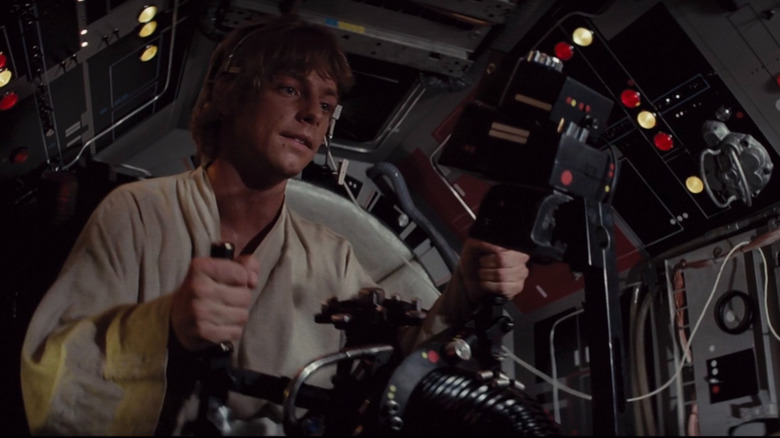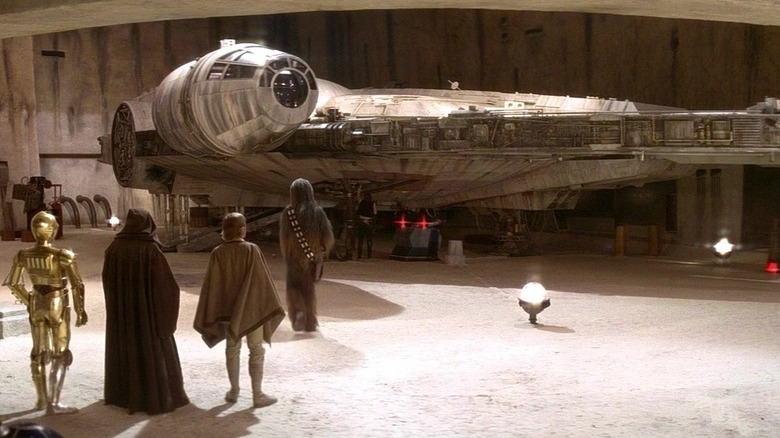'Miles' Of Airplane Scrap Went Into Making Star Wars' Millennium Falcon Set
Science fiction is home to a number of uniquely designed spaceships for exploring the cosmos. "Star Trek" has the USS Enterprise, "Doctor Who" has the TARDIS, and then there's the matter of "Star Wars." With the institution that the series has become, you can take your pick from a number of star cruisers, but it's hard to forget the first time you set your eyes on the Millennium Falcon. The first thing that stands out about the clunky vessel is that it's kind of grimy, which was intentional on the part of the folks who built it.
"Star Wars" grandmaster George Lucas had met the Falcon's eventual set decorator Roger Christian on the set of a critically panned 1975 prohibition adventure called "Lucky Lady," which starred Gene Hackman, Liza Minnelli, and Burt Reynolds. According to an interview with StarWars.com, as Christian helped build transform buildings in Mexico to fit the look of the '20s, he got to talking with Lucas about how the glossy look of science fiction didn't really speak to him:
"They were always too shiny and new, completely fake worlds, but that's how people saw the future back then. I told him that I saw the future like an old car that's bruised and damaged, but it just keeps going and is constantly repaired. I had no idea that I was basically describing the Millennium Falcon."
It was after this moment that Christian, along with "Superman" production designer John Barry, had been hired by Lucas to work on the groundbreaking sci-fi project. When it came to building the Falcon, its foundation ended up emanating from something else that once soared.
You are what you're made of
In trying to nail down what the Falcon could look like, Christian had researched everything from submarines to B-52 bomber planes, which led him to think about using old scrap metal from decommissioned airplanes to put it all together (via StarWars.com):
"I began to think that, if I just used actual airplane scrap, I could layer all of the sets with it. I began to go to all the London airfields, buying up their airplane junk, which I found cost nothing. There were mountains of jet engines, and I was taking as much as I could."
Given that no one was really using all of this airplane scrap, Christian was able to secure about $100,000 worth of it, and the rest, they say, is history. "The whole hold area of the Falcon ended up just being miles of junk and PVC piping," says Christian.
The pair's vision of a dirty old spaceship led them to not only making the iconic ship out of something cheap and affordable, but it also became the backbone of "Star Wars." After the rise of the Empire, the galaxy far, far away deteriorated in its most oppressed locations. The fact that a heroic ship like the Falcon looks used and dirty is part of its charm. You don't expect it to do a lick of good in battle, and it ends us saving the galaxy across generations, reflecting its durability.
The next time you revisit "A New Hope" and hear Luke Skywalker refer to the Falcon as "a piece of junk," it might be a rude comment, but he's also factually accurate.
"Star Wars" is currently streaming on Disney+.

